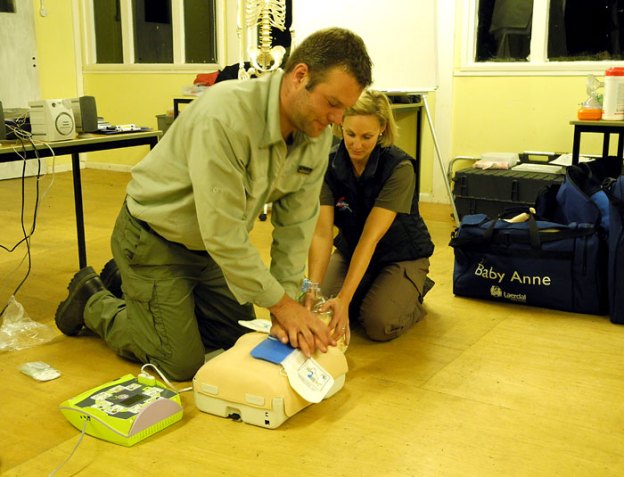The following article was written by Aspirant Instructor and regular blogger Sarah Day:
This season I’ve been working quite a variety of courses and I’ve been struck by how different they are in terms of overall feel. The Fundamental Bushcraft courses are very fast-paced, with lots of skills and lectures being crammed into the week. The Campcraft course meanwhile is slightly slower-paced, to allow for adjustments to using a heavier more powerful tool like the axe. The Tracking Course is much slower, but no less intense; I would say that it has a more academic feel – not that you spend the week studying books, but because you are encouraged to study the minutiae of the woods, to really slow down and try and take it all in.
But whatever the prevailing atmosphere on even the most intense of courses, the aim is rarely to cause stress or fear; to test you certainly, and make you push yourself, but not to actually be stressful. The WEM courses are slightly different.
We put a hell of a lot of time (usually in the evenings, that’s when you might catch us whispering and cackling in a conspiratorial way), effort and material resources (the makeup box is awesome) into turning first aid from an academic exercise to a practical one; because that’s where a lot of first aid training fails – it doesn’t prepare you for actually doing it for real.
Don’t misunderstand me, there is a lot of classroom learning (at which Jamie excels – I think he should have been a stand up comedian), but anything could happen at any time. On one memorable Staff Training session, Dan keeled over in the middle of a lesson on burns and started fitting in the middle of the floor! In the middle of a (genuinely) highly amusing lecture on heart attacks you might have to go and deal with a drowning or a car crash… And we’re not trying to out-fox you, as one student of this year’s WEM 2 remarked (well ok, we are a bit, but what would you learn from a scenario if you’d had all day to plan what to do?).
While I know that a ‘put on’ scenario is never going to fully match the manifold horrors of the real thing, we try to get pretty close and it really does get the adrenaline flowing. There is an element of teamwork, but ultimately it’s for the first aider in charge of each scenario to call the shots and organise everyone else, and it’s not always easy. That’s another element that often gets left out – it’s all very well knowing what to do, but what if a bystander is being a nuisance? Did anyone see what happened? And assuming you’re with a group, are they all ok? Is anyone really shaken up, or is anyone in danger of hypothermia while you wait for help? Getting a taster of what that’s like is extremely useful – forewarned is forearmed as they say.
To balance out the stressful and/or gruesome nature of the scenarios, you have Jamie Cooke’s teaching. Most of the Woodlore staff have been through several First-Aid-at-works and refreshers with Jamie and Fusion and we never get bored of it. His lessons are a joy to sit through, each topic embellished with darkly hilarious anecdotes from his time as a paramedic. The other thing I’ve always enjoyed learning is the underlying biology – I think that makes the First Aid easier to remember and if you forget what to do, you can work it out based on what you know of how the body works.
The WEM courses are aimed at people spending time outdoors and deal with more serious illnesses and injuries than you would expect from a viciously sharp envelope or a photocopier with a grudge, but that doesn’t necessarily mean it’s of no use to you unless you intend to go and live in Siberia for six months. It’s incredible the accidents and misfortunes that befall ordinary people in ordinary surroundings – the office, the road, on holiday. It’s a good feeling to know that if something were to happen, you’d know what to do and how to do it. I find myself on public transport sometimes wondering “If that chap in the flat cap keeled over right now, what would I do? Who looks like they might be useful, who might be a pest?”
If you are due for a refresher of First aid at work, definitely consider the WEM 2 – it’s based around the first aid at work syllabus, although it covers a lot more and in greater depth.
It’s odd, but first aid and navigation are the two skills which are most overlooked when people think of Bushcraft, but they are the most important. You can’t go to beautiful remote places unless you can find your way there and back again, and you shouldn’t go unless you have the first aid know-how to look after yourself and the rest of your group. The WEM courses address contingencies and situations that many first aid courses simply refuse to discuss, and present first aid in a way that is highly relevant and tailored to the outdoors. I firmly believe that the WEM courses are the among the best in the country. But that’s not the only reason I love the WEM – it was quite simply the most fun I’ve ever had working on a course, which is saying a lot!
– Sarah Day





